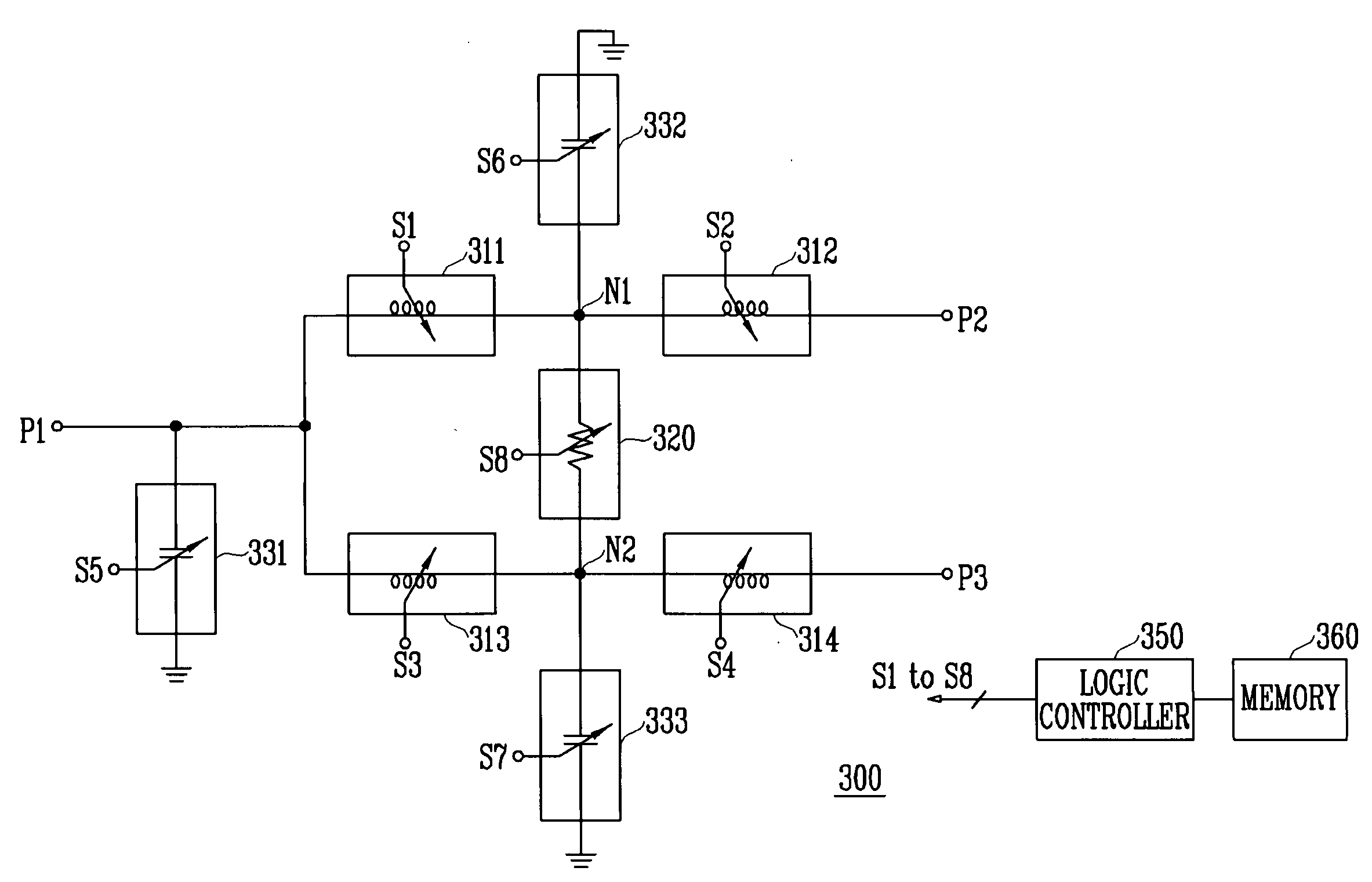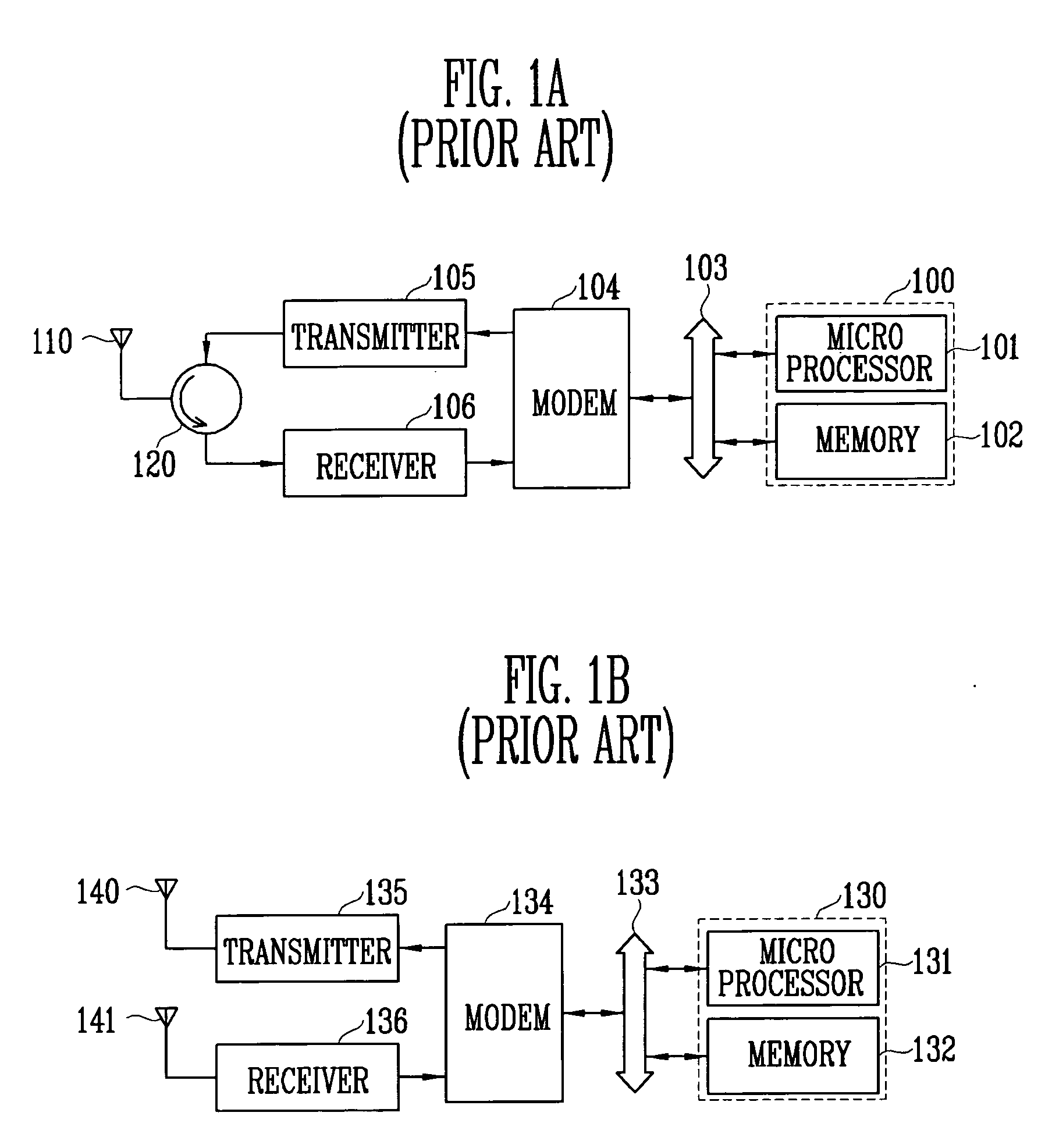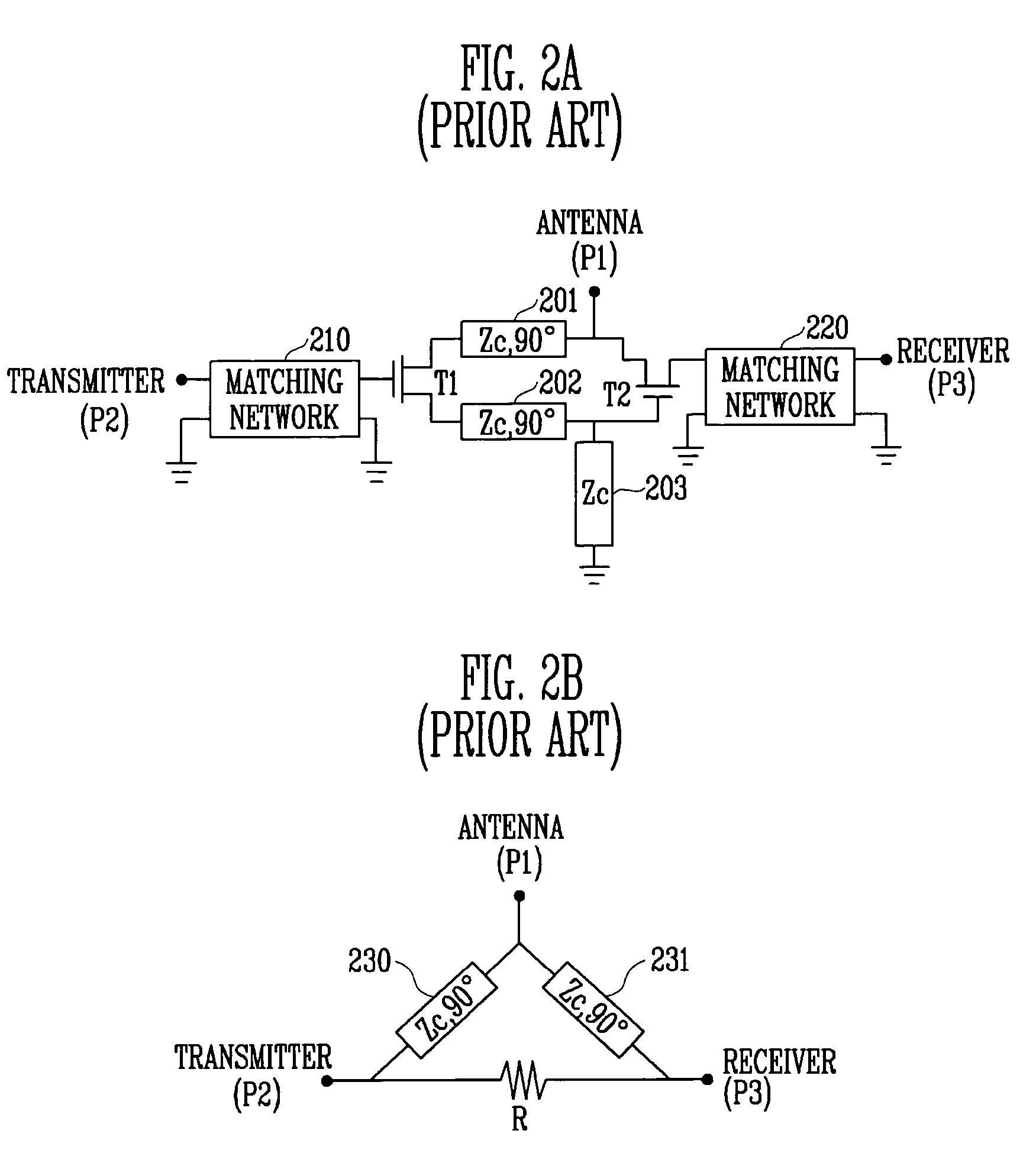Digitally controlled circulator and radio frequency identification reader having the same
a radio frequency identification and circulator technology, applied in the field of digital control circulators, can solve the problems of increasing the dimensions occupied by the antenna, not suitable for small, high-integrated and inexpensive readers, and difficult to apply the structure to small devices such as cellular phones, and achieve the effect of less loss
- Summary
- Abstract
- Description
- Claims
- Application Information
AI Technical Summary
Benefits of technology
Problems solved by technology
Method used
Image
Examples
Embodiment Construction
[0038] Hereinafter, an exemplary embodiment of the present invention will be described in detail. However, the present invention is not limited to the embodiments disclosed below, but can be implemented in various types. Therefore, the present embodiment is provided for complete disclosure of the present invention and to fully inform the scope of the present invention to those ordinarily skilled in the art.
[0039]FIG. 3 is a circuit diagram illustrating a digitally controlled circulator according to an exemplary embodiment of the present invention.
[0040] The circulator 300 includes a first terminal P1 connected to an antenna, a second terminal P2 connected to a transmitter, and a third terminal P3 connected to a receiver. Between the first terminal and the second terminal, first and second variable inductors 311 and 312 are connected in series. And between the first terminal P1 and the third terminal P3, third and fourth variable inductors 313 and 314 are connected in series. A var...
PUM
 Login to View More
Login to View More Abstract
Description
Claims
Application Information
 Login to View More
Login to View More - R&D
- Intellectual Property
- Life Sciences
- Materials
- Tech Scout
- Unparalleled Data Quality
- Higher Quality Content
- 60% Fewer Hallucinations
Browse by: Latest US Patents, China's latest patents, Technical Efficacy Thesaurus, Application Domain, Technology Topic, Popular Technical Reports.
© 2025 PatSnap. All rights reserved.Legal|Privacy policy|Modern Slavery Act Transparency Statement|Sitemap|About US| Contact US: help@patsnap.com



